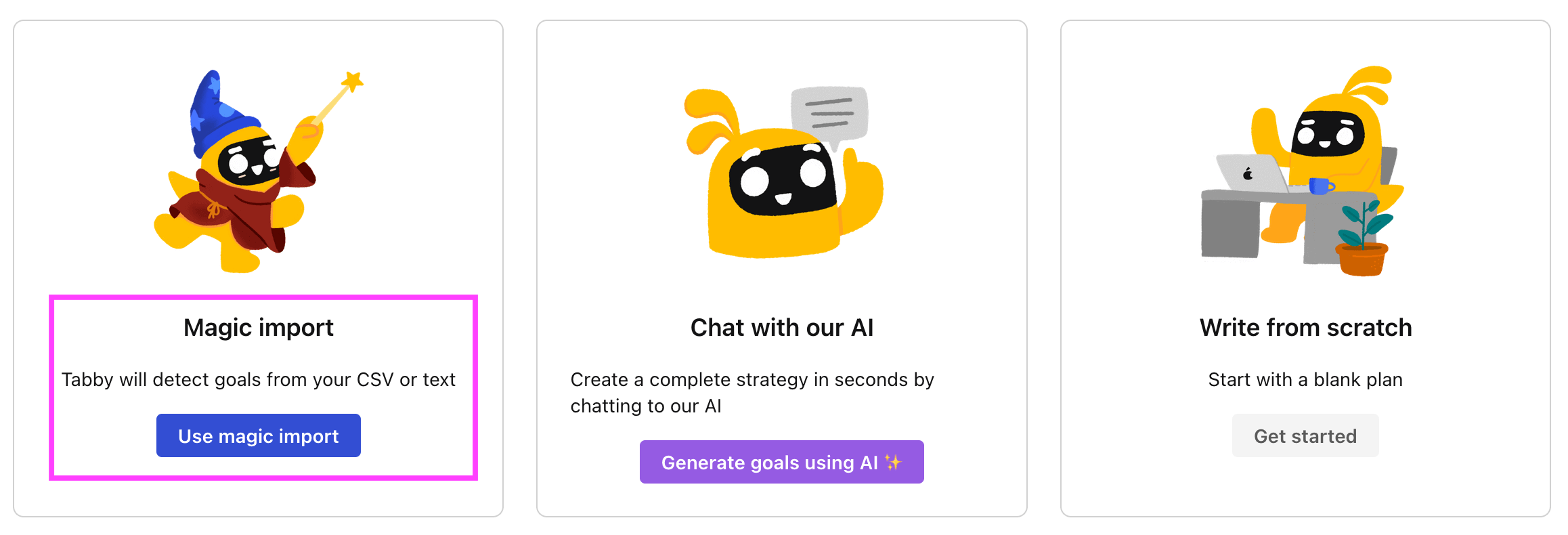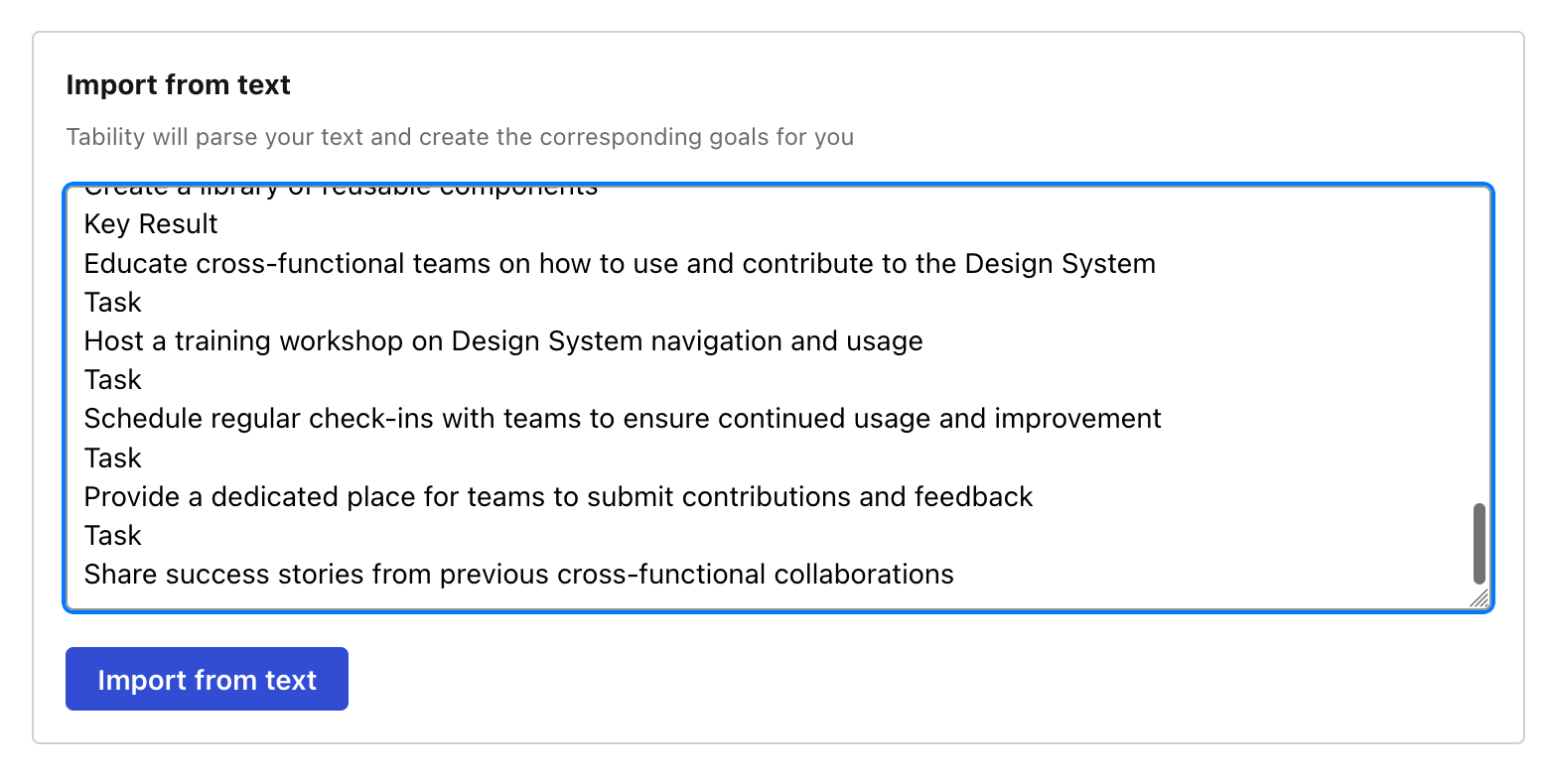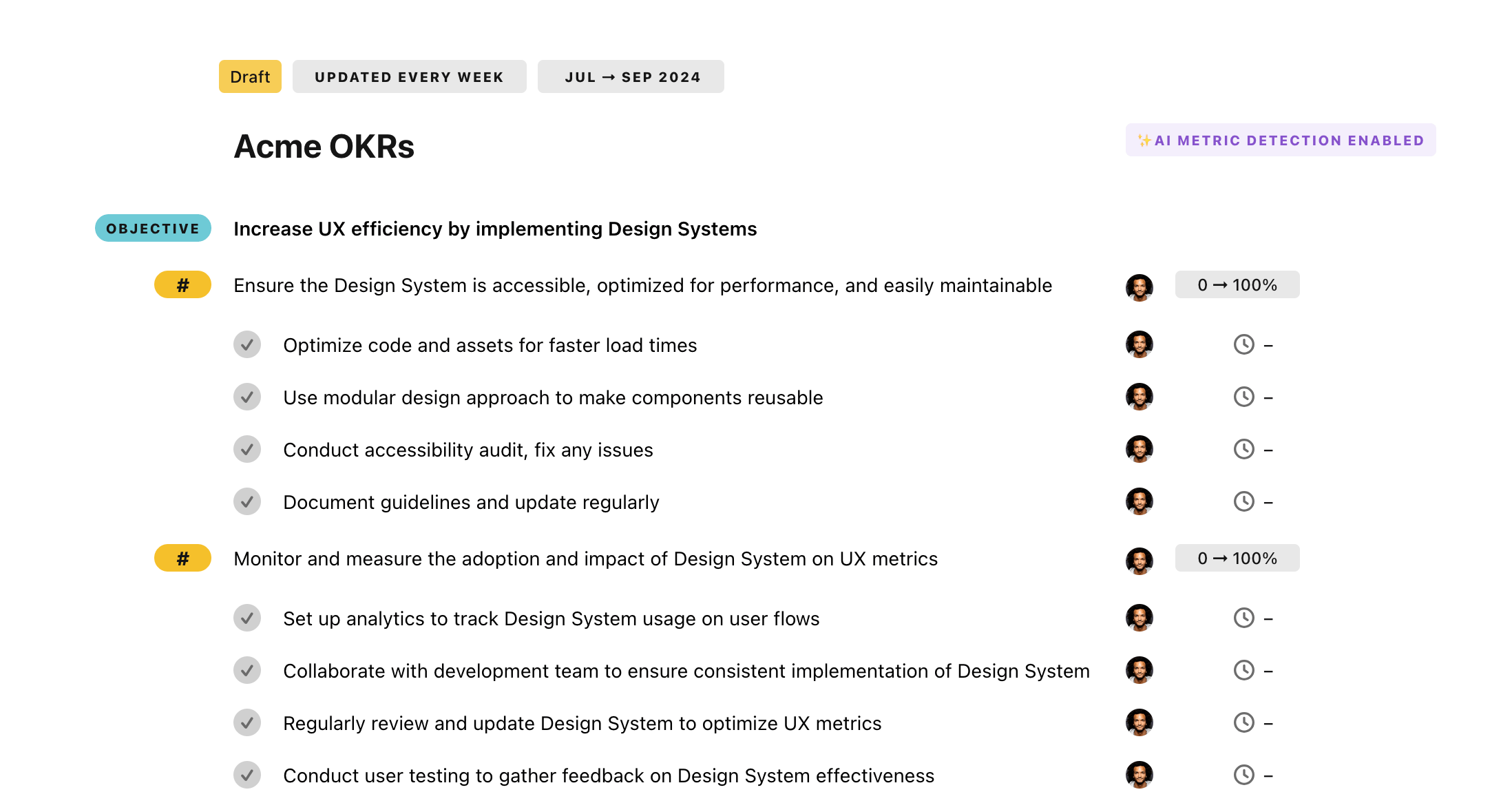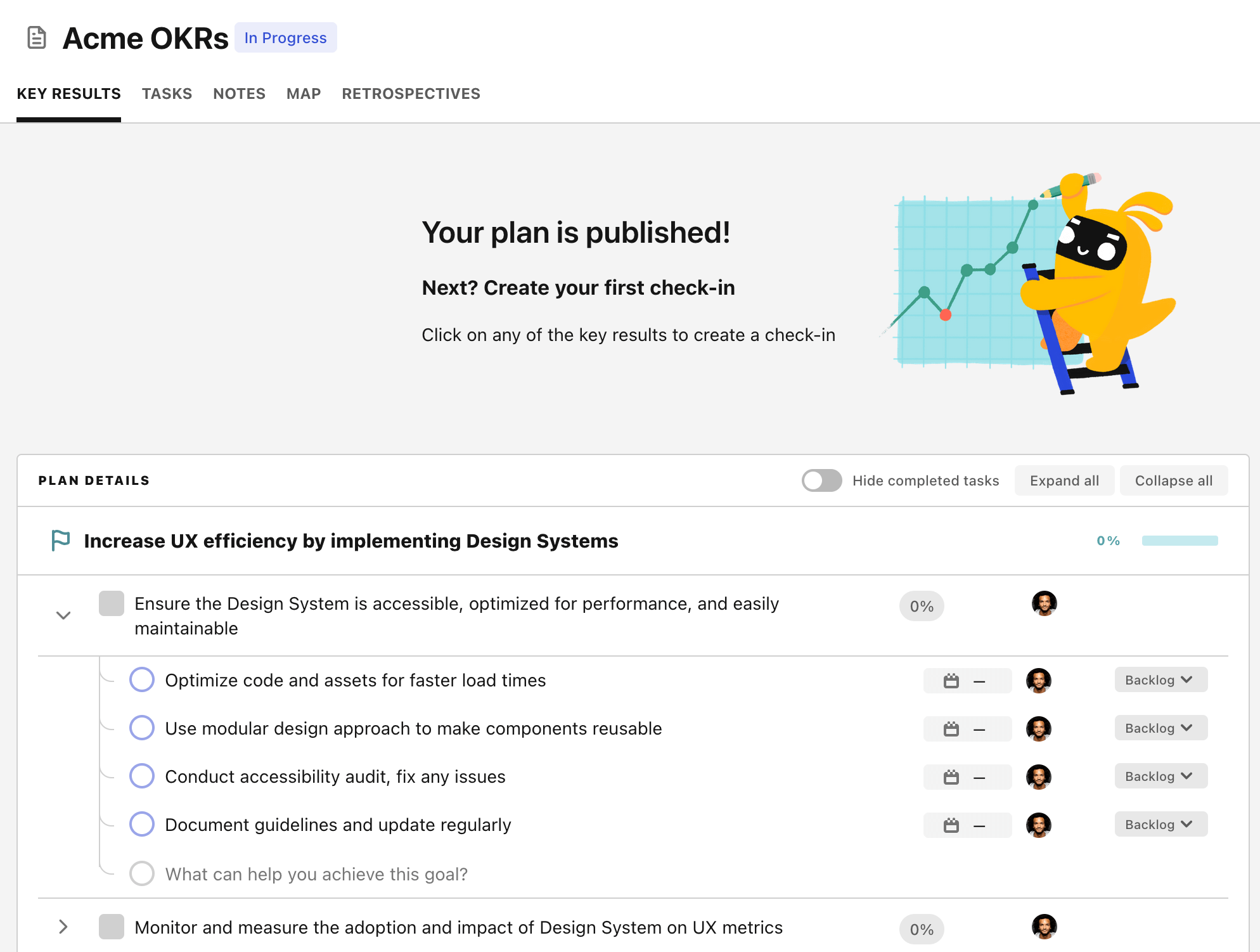OKR template to complete the Rockefeller Habits Checklist
Your OKR template
ObjectiveComplete the Rockefeller Habits Checklist
KR5. Ongoing employee input is collected to identify obstacles and opportunities
Employee input about obstacles and opportunities is being collected weekly
The insights from employee conversations are shared at the weekly executive team meeting
All executives (and middle managers) have a Start/Stop/Keep conversation with at least one employee weekly
A mid-management team is responsible for the process of closing the loop on all obstacles and opportunities
KR1. The executive team is healthy and aligned
Team members understand each other's differences, priorities and styles
The team participates in ongoing executive education (monthly recommended)
The team meets frequently (weekly is best) for strategic thinking
The team is able to engage in constructive debates and all members feel comfortable participating
KR4. Every facet of the organization has a person assigned with accountability for ensuring goals are met
Each 3-5 year Key Thrust/Capability has a corresponding expert on the Advisory Board if internal expertise doesn't exist
The Function Accountability Chart (FACe) is completed (right people, doing the right things, right)
Financial statements have a person assigned to each line item
Each of the 4-9 processes on the Process Accountability Chart (PACe) has someone that is accountable for them
KR8. Employees can articulate the key components of the company's strategy accurately
3 Brand Promises – And the corresponding Brand Promise KPIs reported on weekly
Big Hairy Audacious Goal (BHAG) – Progress is tracked and visible
Core Customer(s) – Their profile in 25 words or less
Elevator Pitch – A compelling response to the question "What does your company do?"
KR9. All employees can answer quantitatively whether they had a good day or week
1 or 2 Key Performance Indicators (KPIs) are reported on weekly for each role/person
Each employee has 1 Critical Number that aligns with the company’s Critical Number for the quarter (clear line of sight)
All executives and middle managers have a coach (or peer coach) holding them accountable to behavior changes
Each individual/team has 3-5 Quarterly Priorities/Rocks that align with those of the company
KR10. The company's plans and performance are visible to everyone
A “situation room” is established for weekly meetings (physical or virtual)
Scoreboards are up everywhere displaying current progress on KPIs and Critical Numbers
There is a system in place for tracking and managing the cascading Priorities and KPIs
Core Values, Purpose and Priorities are posted throughout the company
KR3. Communication rhythm is established and information moves through the organization accurately and quickly
The executive and middle managers meet for a day of learning, resolving big issues, and DNA transfer each month
Quarterly and annually, the executive and middle managers meet offsite to work on the 4 Decisions (Strategy, Execution, People, Cash)
All teams have a weekly meeting
All employees are in a daily huddle that lasts less than 15 minutes
KR7. Core values and purpose are alive in the organization
Actions are identified and implemented each quarter to strengthen the Core Values and Purpose in the organization
All executives and middle managers refer back to the Core Values and Purpose when giving praise or reprimands
HR processes and activities align with the Core Values and Purpose (hiring, orientation, appraisal, recognition, etc.)
Core Values are discovered, Purpose is articulated, and both are known by all employees
KR2. Everyone is aligned with the #1 thing that needs to be accomplished this quarter to move the company forward
3-5 priorities (Rocks) that support the Critical Number are identified and ranked for the quarter
The Critical Number is identified to move the company ahead this quarter
A Quarterly Theme and Celebration/Reward are announced to all employees that bring the Critical Number to life
Quarterly Theme/Critical Number posted throughout the company and employees are aware of the progress each week
KR6. Reporting and analysis of customer feedback data is as frequent and accurate as financial data
The insights from customer conversations are shared at the weekly executive team meeting
All executives (and middle managers) have a 4Q conversation with at least one end user weekly
All employees are involved in collecting customer data
A mid-management team is responsible for the process of closing the loop on all customer feedback
How to edit and track OKRs with Tability
You'll probably want to edit the examples in this post, and Tability is the perfect tool for it.
Tability is an AI-powered platform that helps teams set better goals, monitor execution, and get help to achieve their objectives faster.
With Tability you can:
- Use AI to draft a complete set of OKRs in seconds
- Connect your OKRs and team goals to your project
- Automate reporting with integrations and built-in dashboard
Instead of having to copy the content of the OKR examples in a doc or spreadsheet, you can use Tability’s magic importer to start using any of the examples in this page.
The import process can be done in seconds, allowing you to edit OKRs directly in a platform that knows how to manage and track goals.
Step 1. Sign up for a free Tability account
Go tohttps://tability.app/signup and create your account (it's free!)
Step 2. Create a plan
Follow the steps after your onboarding to create your first plan, you should get to a page that looks like the picture below.

Step 3. Use the magic importer
Click on Use magic import to open up the Magic Import modal.
Now, go back to the OKR examples, and click on Copy on the example that you’d like to use.

Paste the content in the text import section. Don’t worry about the formatting, Tability’s AI will be able to parse it!

Now, just click on Import from text and let the magic happen.

Once your example is in the plan editor, you will be able to:
- Edit the objectives, key results, and tasks
- Click on the target 0 → 100% to set better target
- Use the tips and the AI to refine your goals
Step 4. Publish your plan
Once you’re done editing, you can publish your plan to switch to the goal-tracking mode.

From there you will have access to all the features that will help you and your team save hours with OKR reporting.
- 10+ built-in dashboards to visualise progress on your goals
- Weekly reminders, data connectors, and smart notifications
- 9 views to map OKRs to strategic projects
- Strategy map to align teams at scale